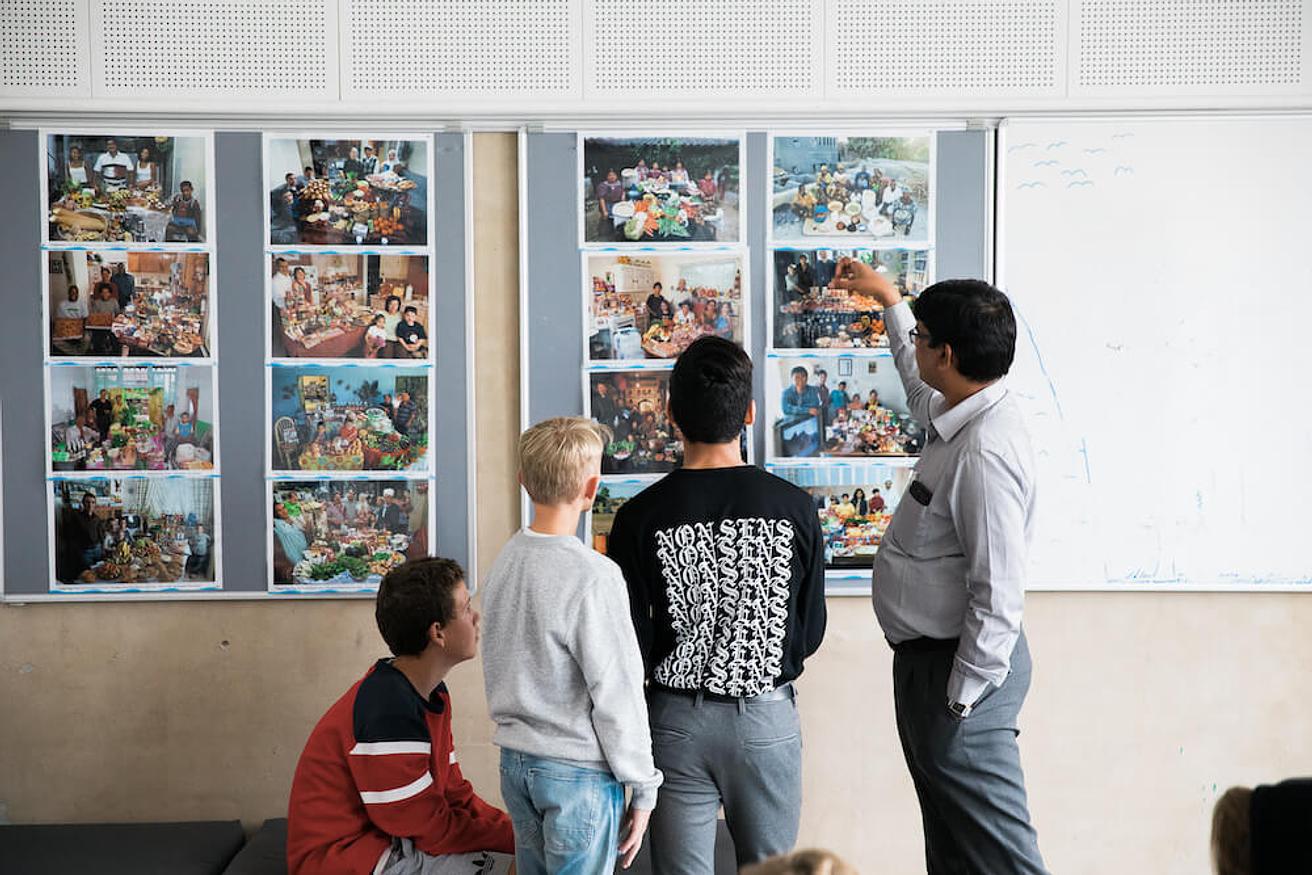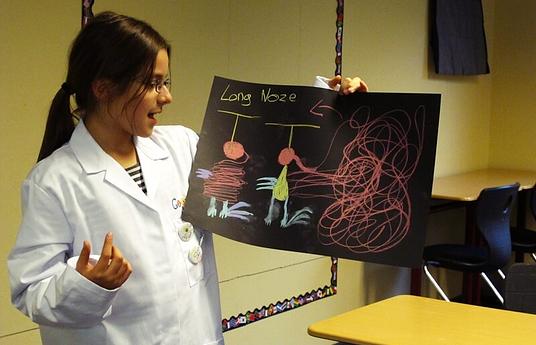When asked to write on the theme, Students Taking the Lead, I will admit to coming from a place of trepidation and skepticism. Sure, the idea of students taking the lead in their education sounds like a great idea on first thought, and I challenge you to find a school website that doesn’t promote how the school is educating its students to be leaders of the future, but as the age-old saying goes, ‘students don’t know what they don’t know’, so how can we expect them to lead the way?
These days in education, buzz words like personalised learning and student leadership are thrown around in curriculum documents, school mission statements and lesson plans with the implicit acceptance that these are worthy goals to strive for. However most of these same documents also claim to promote critical thinking amongst students, so isn’t it reasonable that we as educators approach some of these concepts using our critical thinking skills too?
When I was researching this article, I did what I ask my students to do when taking a position; I went out looking for the evidence. I came across this RAND report on personalised learning and this one, an opportunity by design. In summary, personal choice for students in their learning is showing modest, at best, gains and throwing up many challenges for successful implementation by teachers, schools and systems. If you’re not up for reading the whole reports, Daniel Willingham writes insightfully and succinctly on them here.
As a senior high school teacher working within in a narrowly-defined, prescriptive and jam-packed syllabus, the idea of offering much student choice in my classes seems like a far-flung dream. Sure I could offer them the choice of which neurotransmitters they’d like to study, or which model of acculturation they’d like to get knee-deep into, or which model of memory seems most relevant to their brains wired for smartphone attention spans, but I just don’t have the time to give my students to research all the options and make a decision, while still covering the whole syllabus in an engaging and meaningful way. Student choice in the classroom then becomes tokenistic and inauthentic, ‘do you want to do dopamine first or serotonin first?’, ‘should we work on essay writing today or review content?’, or ‘should we work outside today?’. Two-year-olds are happy when you give them the choice of eating their broccoli or carrots. Grade 12 students are not.
This is not necessarily the case if you’re working in concept based curricular systems where you have much more choice about what and how you teach, such as those often found in primary and middle years classrooms. In those settings, I am all about students taking the lead in their learning, directed by a knowledgeable teacher, coaching them by their side. For these classrooms, one of the best tools I’ve found and helped develop is Building Blocks for Engagement, which places community connection at the heart of units and makes learning relevant to students’ lives. I’ve written previously about my success with this tool here. If you’d like more information on this tool or how it could help in your context to plan more meaningful and engaging units, please reach out and connect!

As for the more challenging space of senior classrooms, where I see amazing opportunities for students to take the lead in their education are in all the spaces in schools, not so much in the formal classrooms, but in students’ unstructured time and decision making. It’s in which of the additional enrichment activities they decide to do, it’s in the themes for longitudinal projects they choose to undertake, it’s in the service projects they decide to get involved with, it’s in the extra hours they keep working on a piece of art even when it would have been good enough a long time ago, it’s in the sports teams they commit to and it’s in how they decide to spend their free periods at school.
For me, this is some of the most important learning our senior students acquire in their last few years of school, as rigorous curriculums demand so much of our students, that there is literally not enough hours in the day for students to complete everything that is asked of them. In this space between the formal curriculum, students take the lead in their education by deciding where to prioritize their time and learning how to say ‘no’; “No, I can’t commit to being in student council this year, I’m already leading the sustainability action group”, “No, I couldn’t complete my homework last night, I was working on another subject which I am really struggling with”, “No, I can’t play in that basketball tournament, I am signed up to teach an English class for refugees that day”.
So for those of us teaching in the real world with the extrinsic pressures of legislated curricula, standardized testing and external exams, maybe our role as educators is not to encourage students to take leadership of their own learning for leadership’s sake, but more to be guides by their side and expose them to as many different possibilities for learning as we can. This way our students can make informed decisions on how they fill that space that exists in the hour between the end of school and football practice, or when they choose to listen to a podcast you’ve recommended on the bus ride home, or by introducing them to a group of younger students with similar interests in need of a mentor.

Those of us who are high school teachers probably have a deep toolbox full of activities, resources and extension pieces in our own subject areas that could open up new horizons of learning for students in our fields, but how can we expose students to learning opportunities outside of the traditional disciplines where we’re not experts? HundrED.org is a great place to start, with heaps of curated learning innovations that students can use to take control of their own learning.
Students could use the activities explained by IAU-AstroEdu to learn the ins and outs of astronomy. IAU-AstroEdu is an open-access platform for peer-reviewed (by astronomers and teachers) astronomy education activities which aims to publish the best astronomy activities for anyone to learn more about astronomy. It’s out of this world, (sun intended)!
Students interested in sustainability could reach out to Eco-Schools to learn how to make their school more sustainable. Eco-Schools helps students with the process of conducting a sustainability audit of their school or community, developing and implementing an action plan to make their environment more sustainable and then reviewing and monitoring how their community is doing in their sustainability journey.
Maybe students are really into tsunamis and there isn’t a qualified seismologist on the school staff to move their learning forward. Here Community Share could be a great resource for students to connect them with experts in all fields under the sun. Community share turns the world into a human library, connecting experts and academics with learners to give real-world and practical examples of careers in action.

When students do come across something that ignites their curiosity, students instinctively take the lead in their education. With all the computing power they’ll ever need in their pocket and open-minded educators willing to work with students to get their projects from ideas to fruition, there are no limits to students taking the lead in their learning.
Students taking control of their learning can be a powerful thing. The HundrED collection is bursting at the seams with examples of student-led innovations. Just look at Initiative for Peace (IfP), a student-led peacebuilding program which was founded by students in response to seeing the adults in their world around them failing to successfully build peace in former conflict zones. The program equips students with the knowledge and skills to organise and run a peace conference for other students from both sides of a conflict, and then they give up part of their summer holiday to actually go to these former conflict zones and run these peace conferences! Another great example is Project Rockit, a youth-driven movement against bullying, hate, and prejudice founded by two sisters who were sick of seeing bullying happening all around them in their high school. Project Rockit is built by young people for young people and encourages students to self-reflect on previous experiences while simultaneously equipping them with credible and risk-free ways to stand up to hate in the future. What started as two students taking the lead in changing their educational environment now reaches over 60,000 students a year and leaves 96% of them feeling equipped to stand up to hate and bullying.
You only need to ask students who have been involved in student-led initiatives like IfP about their experiences to see their power. An IfP alumnus from 2017, Jeff, reflected on his experience, “organising the conference changed my life. I went to organise a peace conference for other people but I ended up finding peace within myself”. Now that is student-led learning I can get behind.
Ellen Heyting is a HundrED Ambassador, a committed teacher and an advocate for student-led learning (when done right!). You can join her and other such remarkable people by applying to become a HundrED Ambassador here.


